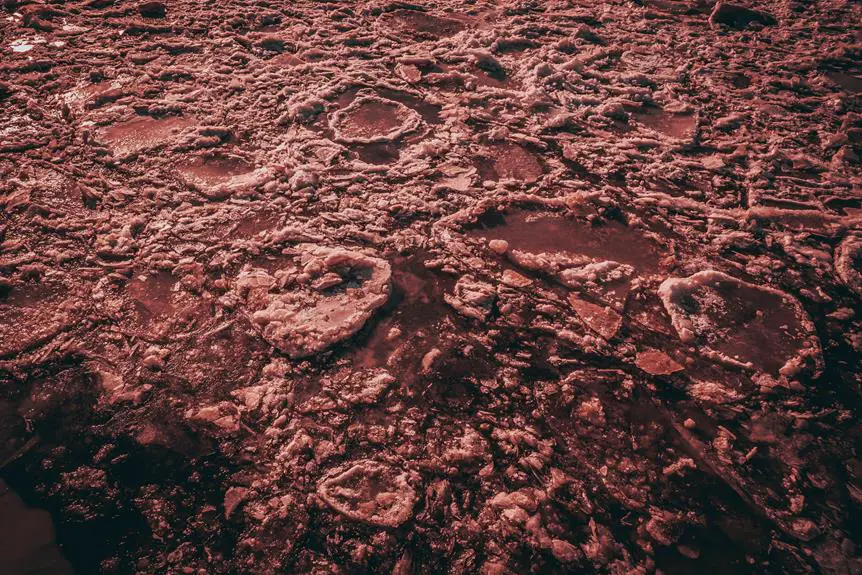You may think you know about acrylic fiber, but there's a whole world of information waiting for you.
From its impressive properties to its environmental impact, acrylic fiber has a lot to offer.
Let's dive into the top 5 things you should know to master this versatile material.
Key Takeaways
- Acrylic fiber is a durable material that is resilient to wear and tear, making it ideal for outdoor furniture, carpets, and upholstery.
- It offers remarkable softness similar to natural fibers like wool and retains its shape and color well after washing.
- Acrylic fiber is resistant to environmental factors such as moisture, mildew, and sunlight, making it suitable for outdoor fabrics and carpets.
- However, the production of acrylic fiber involves the use of petrochemicals from non-renewable resources, contributing to carbon emissions and environmental degradation. Strict regulations and sustainability initiatives are in place to mitigate these impacts.
Properties of Acrylic Fiber
Understanding the properties of acrylic fiber is essential for evaluating its suitability for various applications. Acrylic fiber is known for its durability, making it an ideal choice for products that require long-lasting performance. Its resilience to wear and tear makes it a popular option for outdoor furniture, carpets, and upholstery.
Additionally, acrylic fiber offers a remarkable softness, closely resembling the feel of natural fibers such as wool. This softness adds a luxurious touch to textiles, making them comfortable to wear and use.
In terms of durability, acrylic fiber excels in withstanding environmental factors such as moisture, mildew, and sunlight, making it suitable for outdoor and indoor use. Its ability to retain color well also makes it a preferred choice for outdoor fabrics and carpets.
Moreover, the softness of acrylic fiber enhances the comfort of garments, blankets, and other textile products. This combination of durability and softness positions acrylic fiber as a versatile material with wide-ranging applications, from outdoor furniture and carpets to cozy winter wear and blankets.
Advantages of Acrylic Fiber
Acrylic fiber offers several advantages, including its exceptional durability and softness, making it a highly versatile material for various applications.
The durability of acrylic fiber makes it resistant to abrasion, chemicals, and sunlight, ensuring that products made from it have a longer lifespan. This durability also makes it easy to care for, as it can withstand regular washing without losing its shape or color.
Additionally, the softness of acrylic fiber is comparable to natural fibers like wool, providing comfort and warmth without the potential itchiness. Its moisture-wicking properties further enhance its appeal by drawing moisture away from the skin, keeping you dry and comfortable.
Furthermore, acrylic fiber's versatility allows it to mimic the qualities of other fibers, making it an affordable alternative for various purposes. It can be used to create a wide range of products, from outdoor furniture and carpets to activewear and blankets. Its ability to hold dye well results in vibrant, long-lasting colors, adding to its appeal for both manufacturers and consumers.
Environmental Impact of Acrylic Fiber
What are the environmental implications of using acrylic fiber in various products, and how does its production impact ecosystems and sustainability?
The production of acrylic fiber involves the use of petrochemicals, which can have a significant environmental impact. These petrochemicals are derived from non-renewable resources, contributing to carbon emissions and environmental degradation. Additionally, the manufacturing process of acrylic fiber can release volatile organic compounds (VOCs) and other pollutants into the air and water, potentially harming ecosystems and human health.
Environmental regulations play a crucial role in mitigating the impact of acrylic fiber production. Many countries have established strict regulations regarding air and water pollution, waste management, and energy consumption in textile manufacturing facilities. Compliance with these regulations is essential for minimizing the environmental footprint of acrylic fiber production.
On the other hand, sustainability initiatives within the textile industry are driving the development of more eco-friendly acrylic fiber production methods. These initiatives focus on reducing energy consumption, water usage, and emissions, as well as increasing the use of recycled materials. By embracing sustainable practices, acrylic fiber manufacturers can lessen their environmental impact and contribute to a more sustainable future for the textile industry.
Care Instructions for Acrylic Fiber
To ensure the longevity of products made with acrylic fiber, follow these essential care instructions.
- Washing tips: Turn your acrylic fiber garments inside out before washing to reduce pilling. Use a gentle cycle with cold water and a mild detergent to protect the fibers. Avoid using bleach as it can damage the fabric.
- Drying techniques: After washing, lay the acrylic fiber items flat to dry to maintain their shape and prevent stretching. Avoid wringing out the water, as this can cause the fabric to lose its shape. If using a dryer, use a low heat setting and remove the items promptly to prevent overheating.
Taking proper care of your acrylic fiber products will help retain their quality and ensure they last longer. Always follow the care instructions on the garment's label for specific guidance.
Applications of Acrylic Fiber
When considering applications of acrylic fiber, incorporating the proper care techniques ensures the longevity of the material in various products. In the fashion industry, acrylic fiber is widely used in the production of sweaters, socks, and sportswear due to its soft texture, lightweight, and ability to retain color well. Its versatility allows for the creation of fashionable and functional clothing items.
Moreover, in textile manufacturing, acrylic fiber is utilized in upholstery, carpets, and curtains. Its resistance to stains and sunlight, along with its durability, makes it a popular choice for home furnishings. Additionally, acrylic fiber is often blended with other fibers such as wool or cotton to enhance their properties, creating a wide range of textiles for different applications.
Its affordability and easy maintenance make it a practical choice for both the fashion and textile industries. Understanding the diverse applications of acrylic fiber and its proper care techniques is essential in maintaining the quality and performance of products in which it's used.
Frequently Asked Questions
Can Acrylic Fiber Be Dyed at Home Using Regular Fabric Dye?
Yes, you can dye acrylic fiber at home using regular fabric dye. However, DIY dyeing may affect color fastness. Acrylic has low dye absorption, so you may need to use specific dyes and follow precise instructions for best results.
What Are Some Common Misconceptions About the Durability of Acrylic Fiber?
Don't fall for durability myths about acrylic fiber. It's not as fragile as some claim. And when it comes to fabric dyeing techniques, acrylic can be dyed at home using regular fabric dye with great results.
Are There Any Health Concerns Associated With Wearing Clothing Made From Acrylic Fiber?
Wearing clothing made from acrylic fiber may pose potential health risks due to the manufacturing process. Long term effects and environmental impact are concerns. Consider choosing alternative materials for a healthier and sustainable wardrobe.
How Does the Cost of Acrylic Fiber Compare to Other Synthetic and Natural Fibers?
Acrylic fiber's cost compares favorably to other synthetic and natural fibers. Its production process focuses on quality control, resulting in a durable and affordable material. Consider its environmental impact when choosing materials for your projects.
Are There Any Specific Storage Recommendations for Acrylic Fiber Garments to Prevent Damage?
To ensure your acrylic fiber garments stay in top condition, proper care and storage recommendations are essential. Store them in a cool, dry place away from direct sunlight and heat to prevent damage and preserve their quality.
- The Role of Certifications in Sustainable Fabrics - July 20, 2024
- Innovations in Fabric Waste Reduction - July 20, 2024
- The Lifecycle of Eco-Friendly Textiles - July 20, 2024





